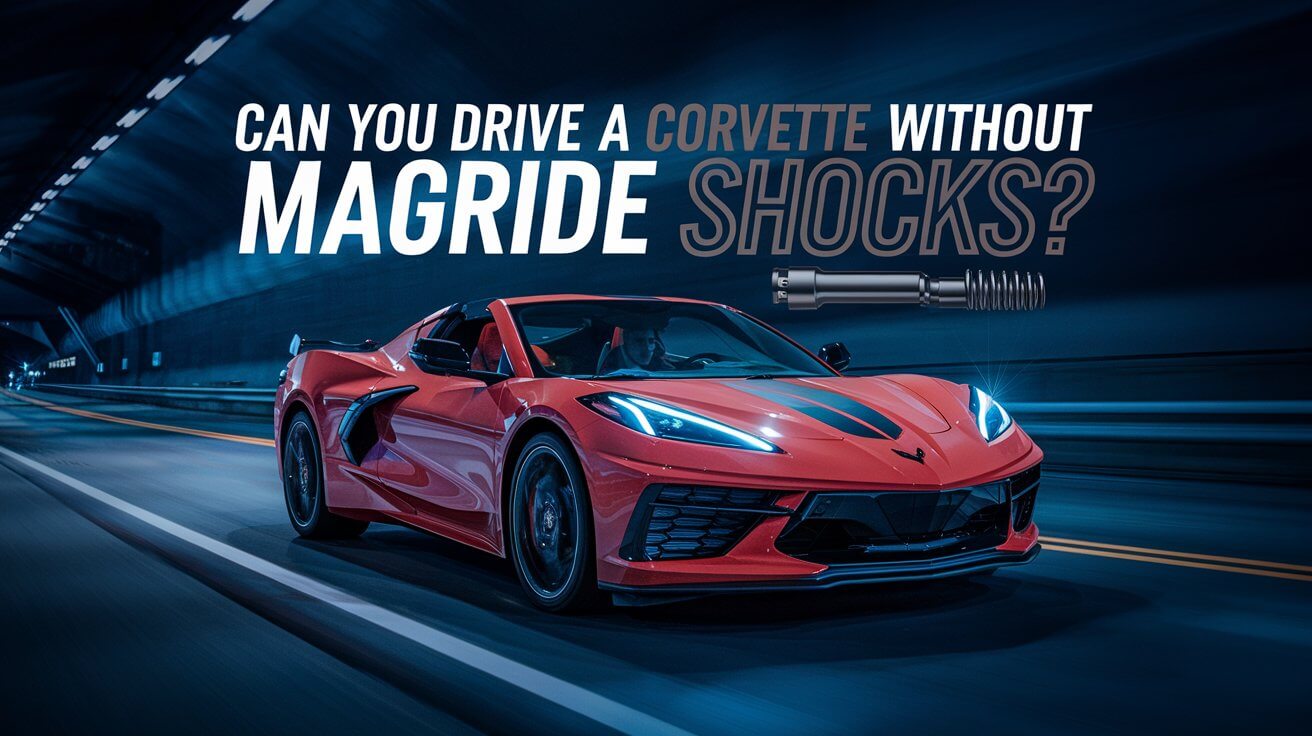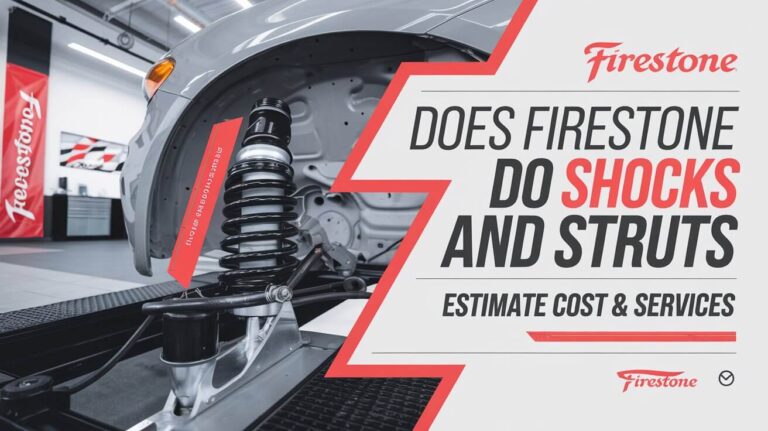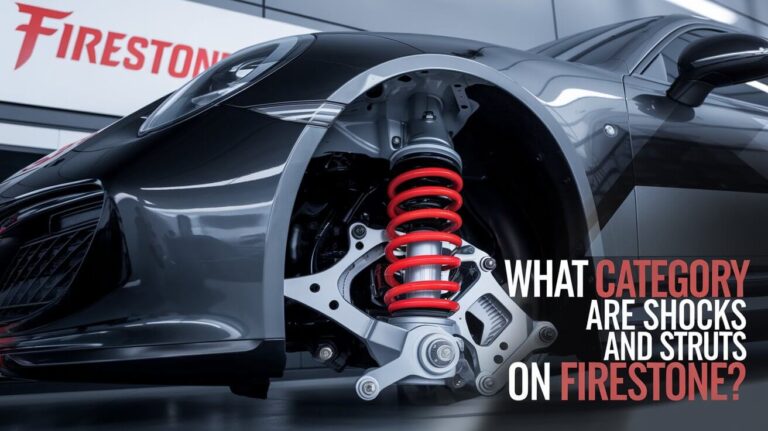Can You Drive a Corvette Without MagRide Shocks?

When buying or upgrading a Corvette, the decision to opt for Magnetic Ride Control (MagRide) can significantly impact the car’s driving dynamics and comfort. But can you drive a Corvette without MagRide shocks? The short answer is yes, you can. However, it is essential to understand the trade-offs between a Corvette with MagRide and one without it, as they offer different driving experiences. This article will dive deep into the pros and cons of both setups, exploring all aspects from daily driving to track performance and maintenance.
What Is Magnetic Ride Control (MagRide)?
Magnetic Ride Control, commonly referred to as MagRide, is an advanced suspension system developed by General Motors. It was first introduced in the early 2000s and has since become one of the most sought-after features in high-performance vehicles like the Chevrolet Corvette.
MagRide uses magnetorheological fluid, which contains iron particles, inside the shock absorbers. When exposed to a magnetic field, this fluid can change its viscosity almost instantly. By adjusting the magnetic field in real-time, MagRide modifies the suspension stiffness, providing an adaptive ride that changes depending on road conditions, driving mode, or speed. This system makes the car both comfortable and capable of high-performance driving.
Evolution of MagRide in Corvettes
Over the years, the Magnetic Ride Control system has undergone several upgrades, with the most recent being MagRide 4.0. This iteration offers even more precise control, using accelerometers on the suspension knuckles to deliver quicker response times and improved accuracy. The system continuously adjusts the damping rates up to 1,000 times per second, making it incredibly responsive to changes in road conditions and driving dynamics.
Benefits of MagRide Shocks for Driving Performance
Enhanced Ride Comfort
One of the most significant advantages of MagRide is its ability to offer a smoother ride, particularly on uneven or rough roads. This is especially beneficial for long-distance driving, where comfort is paramount. Many Corvette owners who opt for MagRide praise its ability to absorb road imperfections, offering a balance between performance and comfort.
Superior Cornering and Handling
MagRide enhances the Corvette’s cornering abilities by adjusting the suspension in real-time, helping the tires maintain optimal contact with the road. This dynamic adjustment significantly improves handling, particularly when taking sharp turns at high speeds. Corvette owners who frequently drive on twisty roads or track their cars often cite MagRide’s ability to offer a planted, confidence-inspiring feel.
Flexibility and Adaptability
The MagRide system provides different driving modes, such as Sport, Tour, and Track. These modes adjust the suspension’s stiffness to match the driving conditions. In Tour mode, for example, the suspension becomes softer for more comfort during everyday driving. In Track mode, the suspension tightens for sharper handling and responsiveness. This adaptability is a major selling point for drivers who want a versatile sports car.
MagRide vs. Standard Suspension
Not all Corvettes come equipped with MagRide, and many models offer a standard suspension setup. While MagRide offers enhanced performance, the standard suspension isn’t without its merits. Some drivers prefer a fixed suspension for various reasons, including cost savings and a preference for a more traditional driving feel.
Ride Quality Differences
The standard suspension in a Corvette is tuned for performance, but it doesn’t offer the real-time adjustability that MagRide provides. As a result, cars without MagRide may feel stiffer over rough roads. However, some drivers appreciate the more direct, mechanical connection to the road that a non-adaptive suspension can offer. For those who prefer a rawer driving experience, the standard suspension may be more appealing.
Handling on Different Roads
While MagRide excels at adapting to various road conditions, a standard suspension can still handle well, especially on smoother roads or highways. Drivers who mostly use their Corvette for daily commuting or occasional spirited driving may find the standard setup sufficient. However, when pushed to the limit, particularly on winding roads or a track, the difference in handling becomes more apparent.
Driving a Corvette Without MagRide: Is It Possible?
Absolutely, you can drive a Corvette without MagRide. Many Corvette owners do, and they enjoy their driving experience just as much as those with MagRide-equipped cars. However, it’s important to understand the trade-offs. Without MagRide, you lose the ability to adjust suspension settings dynamically, which can affect ride comfort and handling in varying conditions.
What You Gain Without MagRide
One of the primary benefits of opting out of MagRide is cost savings. MagRide is often an expensive add-on, and some drivers may not feel that the benefits justify the additional cost, especially if they don’t plan on pushing their car to its limits. Additionally, without the complex electronics and sensors involved in MagRide, there may be fewer components to maintain or repair down the road.
What You Lose Without MagRide
The main disadvantage of driving a Corvette without MagRide is the lack of adaptability. A fixed suspension can’t adjust to changing conditions, which means that you’ll likely experience a stiffer ride on bumpy roads and less optimal handling in extreme driving situations. If you enjoy track days or spirited driving on winding roads, you may find the standard suspension limiting compared to MagRide’s dynamic capabilities.
Real-World Reviews: Driving Without MagRide
Corvette enthusiasts have shared various opinions on driving models without MagRide. For some, the absence of MagRide doesn’t detract from the car’s performance or enjoyment. They appreciate the cost savings and prefer the more direct road feel that a fixed suspension offers.
However, those who have experienced both setups often remark on the noticeable difference in comfort and handling. Drivers who frequently track their Corvettes or drive on twisty roads tend to prefer MagRide because of the enhanced control it offers in high-performance situations.
Track vs. Daily Driving
On a race track, the benefits of MagRide become much more evident. The system’s ability to adjust damping rates in real-time helps the car remain composed during high-speed cornering and hard braking. Many drivers who track their Corvettes wouldn’t consider driving without MagRide. On the other hand, for everyday driving, especially on smooth highways, the difference may be less noticeable, making the standard suspension more than adequate for some.
Pros and Cons of Owning a Corvette Without MagRide
Pros:
- Cost Savings: One of the most significant advantages of skipping MagRide is the lower cost. Without the additional technology, you’ll save on the initial purchase price and potentially on long-term maintenance.
- Simplicity: A Corvette without MagRide is mechanically simpler, which can appeal to drivers who prefer a more traditional, less complicated sports car.
- Raw Driving Feel: Some enthusiasts prefer the more connected, mechanical feel of a fixed suspension, especially when driving aggressively.
Cons:
- Reduced Comfort: Without MagRide, you’ll likely experience a stiffer, less comfortable ride, particularly on rough roads.
- Limited Adaptability: A fixed suspension doesn’t adjust to different driving conditions, which can be a drawback for drivers who enjoy switching between casual cruising and spirited driving.
- Lower Resale Value: Corvettes with MagRide are often more desirable on the used market, so skipping this feature may affect resale value.
Is MagRide Necessary for Daily Driving?
For daily driving, MagRide can enhance comfort, especially on rough or uneven roads. It’s particularly beneficial for drivers who use their Corvette as a daily driver and frequently encounter varying road conditions. However, if your daily driving consists primarily of smooth highways or city streets, you may not notice a significant difference between MagRide and a standard suspension.
Comfort vs. Performance
The choice between MagRide and standard suspension often comes down to how much you value comfort versus performance. If you prioritize a smooth, cushioned ride, MagRide is worth considering. If you’re more interested in a sporty, direct connection to the road, the standard suspension may be more suited to your needs.
MagRide and Track Performance: A Must-Have?
If you plan to take your Corvette to the track, MagRide is highly recommended. Its ability to adjust the suspension in real-time helps optimize the car’s performance, particularly during high-speed cornering and hard braking. Track enthusiasts often praise MagRide for providing a planted, predictable feel, which allows for more confidence and better lap times.
Track Performance Benefits
MagRide’s adaptive suspension can make a noticeable difference in lap times and overall performance. The system helps the car maintain optimal tire contact with the road, reducing body roll and improving cornering stability. This is especially important in high-speed situations where maintaining control is crucial.
MagRide in Extreme Conditions: Weather and Road Quality
MagRide’s adaptability isn’t limited to performance driving. It also excels in adverse weather conditions, such as rain or snow. By adjusting the suspension to keep the tires in better contact with the road, MagRide improves grip and stability, helping to prevent hydroplaning or loss of control.
How MagRide Handles Rough Roads
On rough or uneven roads, MagRide’s ability to adjust damping rates helps smooth out the ride. This makes it a valuable feature for drivers who frequently encounter potholes, cracks, or other road imperfections. Without MagRide, you may feel more of these imperfections, leading to a less comfortable driving experience.
Cost Considerations: Is MagRide Worth the Extra Money?
MagRide is a premium feature, and it comes at a premium price. The decision to invest in MagRide ultimately depends on how much you value the additional comfort and performance it offers.
Initial Purchase Cost
MagRide is often an expensive add-on, and it can increase the price of a new Corvette by several thousand dollars. For budget-conscious buyers, this additional cost may be a dealbreaker, especially if they don’t plan to track their car or push it to its limits.
Maintenance Costs
In addition to the higher upfront cost, MagRide may also### Maintenance Costs In addition to the higher upfront cost, MagRide may also lead to higher maintenance expenses due to its complex electronic and hydraulic systems. Repairs or replacements for MagRide components tend to be more expensive than those for a standard suspension setup. While the system is generally reliable, the advanced technology does add to potential long-term costs.
Is It Worth It?
For drivers who prioritize comfort and performance, the benefits of MagRide often outweigh the extra cost. However, for those who mainly use their Corvette for daily driving and don’t plan on pushing it to its performance limits, the additional investment may not be necessary.
Corvette Models Without MagRide: Who Should Choose These?
Several Corvette trims come without MagRide as standard equipment, and some buyers may opt to keep it that way to save on costs or maintain a simpler driving experience. These models still deliver exceptional performance, but without the adaptive suspension technology.
Ideal Buyer Profiles
- Budget-Conscious Drivers: If you’re looking to get the most out of your Corvette purchase while keeping costs down, skipping MagRide could be a good option. Standard suspension Corvettes are still fantastic machines, especially if you don’t need the adaptive suspension technology.
- Drivers Seeking a Raw Experience: Some enthusiasts prefer a more traditional, raw driving experience. For them, the fixed suspension offers a more direct feel of the road, free from electronic adjustments.
- Casual Drivers: If you’re not planning on tracking your Corvette or pushing it to the limit, the standard suspension may be perfectly fine. For most daily driving scenarios, the difference in performance may not be significant enough to justify the extra cost.
Aftermarket Alternatives to MagRide
For Corvette owners who want the benefits of MagRide but didn’t purchase their car with it, there are a few options to consider.
Retrofitting MagRide
It’s possible to retrofit MagRide onto a Corvette that didn’t originally come with it, but this can be an expensive and complex process. It involves installing sensors, accelerometers, and new control units, which can cost several thousand dollars.
Aftermarket Suspension Systems
Another option is to explore aftermarket suspension systems that offer similar benefits to MagRide, such as adjustable coilover systems. While these won’t provide the same level of real-time adaptability, they can offer a balance between comfort and performance, often at a lower cost than retrofitting MagRide.
Pros and Cons of Aftermarket Systems
- Pros: Lower cost than retrofitting MagRide, adjustable for different driving conditions, can improve performance.
- Cons: Lacks the real-time adaptability of MagRide, may not offer the same level of comfort or control in extreme conditions.
Conclusion
In conclusion, yes, you can drive a Corvette without MagRide shocks, and many drivers do so happily. However, it’s essential to weigh the pros and cons based on your driving preferences and budget. MagRide offers significant benefits in terms of comfort, handling, and adaptability, especially for those who plan to track their car or drive on varying road conditions. On the other hand, for casual driving or for those who prefer a raw, mechanical connection to the road, the standard suspension may be more than sufficient.
Ultimately, the decision comes down to whether you value the extra comfort and performance that MagRide provides, and whether you’re willing to pay for it both upfront and in potential maintenance costs. Whether you choose MagRide or not, the Corvette remains one of the most capable and exciting sports cars on the market.




